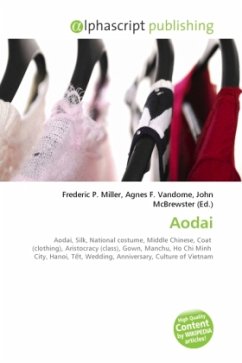The ao dai is a Vietnamese national outfit primarily for women. In its current form, it is a tight-fitting silk tunic worn over pantaloons. Áo dài is pronounced [ wzâ j], approximately ow-zye in the North, and with a y sound for the z in the South. Áo is derived from a Middle Chinese word meaning "padded coat" ( ).Dài means "long".The style worn today is a modernization of the áo ng thân, a 19th century aristocratic gown influenced by Manchu Chinese fashions. Inspired by Paris fashions, Hanoi artist Nguy n Cát T ng and others redesigned the áo ng thân as a dress in the 1920s and 1930s.The updated ao dai was promoted by the artists of T L c v n oàn ("Self-Reliant Literary Group") as a national costume for the modern era. In the 1950s, Saigon designers tightened the fit to produce the version worn by Vietnamese women today.
Bitte wählen Sie Ihr Anliegen aus.
Rechnungen
Retourenschein anfordern
Bestellstatus
Storno








